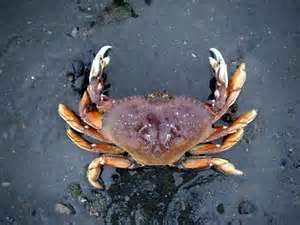Southeast Alaska’s Dungeness crab fishery had a strong first week and will not have a shortened season like last year.
The summer season for most of the region started June 15. The Alaska Department of Fish and Game announced in late June that crabbers would have a full two-month summer season. Fishermen caught more than 871,000 lbs. during the first week. The agency uses the first week’s catch to estimate how many crab will be harvested during the season. Tessa Bergmann with Fish and Game in Petersburg said this year’s estimate is the third highest on record.
“Our harvest estimate for the 2018 season is just over 3.7 million lbs.,” Bergmann said.
That is well above the 2.25 million lb. estimate required for a full season in Southeast Alaska. It will mean crabbers can keep fishing through Aug. 15.
This despite the fact that there are slightly fewer fishermen participating in the Dungeness crab fishery compared to last year. Biologists estimated in 2017 that the total season harvest would be just over 1.6 million lbs. That number triggered the regulation requiring shorter seasons in the summer and fall. Bergmann said this system is useful for managers.
“It’s basically just using the precautionary approach, since we don’t have a stock assessment survey. Just making sure the stocks are healthy and over that threshold,” she said.
After a slow summer in 2017, harvest numbers improved during a shortened one-month fall season. Bergmann said she does not know why last summer’s harvests were so low. Crab biologists use commercial harvest numbers to watch the Dungeness population, and that leaves a lot of uncertainty about what’s happening to crabs in the region. Fish and Game takes samples at the docks and interviews fishermen about what they are seeing.
“What we do know is that fisherman are seeing good numbers of legal crab and good numbers of pre-recruits in females, and port samplers’ dockside interviews are quantifying legal-sized light crab that aren’t being brought in for sale,” Bergmann said.
Pre-recruits are crab that are too small to legally harvest. Commercial crab fishermen in Alaska and several other states can only keep male crab that are above a certain size. Though fishermen are allowed to harvest light or soft-shell crab, they generally don’t because these crab don’t sell for much. Crab molt sometime between July and February, and they are more sensitive before their shells harden. That is why managers tread carefully during the summer season.
Some industry representatives have called for an end to the option to shorten seasons based on the first week’s harvest, arguing that fishermen are already burdened by the resurgence of sea otters, and that a set season would make it easier to plan ahead. The issue came up at this past January’s Board of Fish meeting, but as KFSK reported, the board voted 6-1 to keep these rules in place.
Bergmann said the average price for the first week of Dungeness crabbing this year was $3.04 per pound at the docks. The total value of that first week’s catch is more than $2.9 million.











